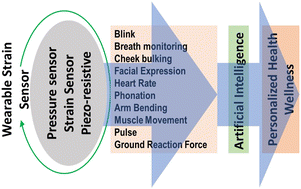Wearable strain sensors: state-of-the-art and future applications
Abstract
Wearable strain sensors have drawn massive awareness in various studies and industrial fields. The growing suitability and adaptability of such systems have increased the demand for developing instruments with improved aspects and packaging required to investigate bio-integrated gadgets, electronic skins, wearable wellness care techniques, and smooth robotics. Despite the outstanding performance, there are enormous challenges in the production of significant fundamental enrichments to the latest optical, mechanical, electrical, and sensing modalities and developing these for precise detection needs. Given all these demanding challenges, state-of-the-art wearable strain sensor technology is evolving towards a roadmap for exploring next-level generation innovations and breakthroughs in nanotechnology, and flexible strain sensors incorporate the virtues of stretchability, high detection power, and several other features. Skin-attachable wearable devices are developing as a tremendously attractive area due to their capable applications in the fields of artificial intelligence, human–machine systems, and healthcare tools. To understand and explore wearable strain sensors, this brief review describes aspects of flexible wearable strain sensing systems along with their challenges and prospects.

- This article is part of the themed collection: Recent Review Articles


 Please wait while we load your content...
Please wait while we load your content...